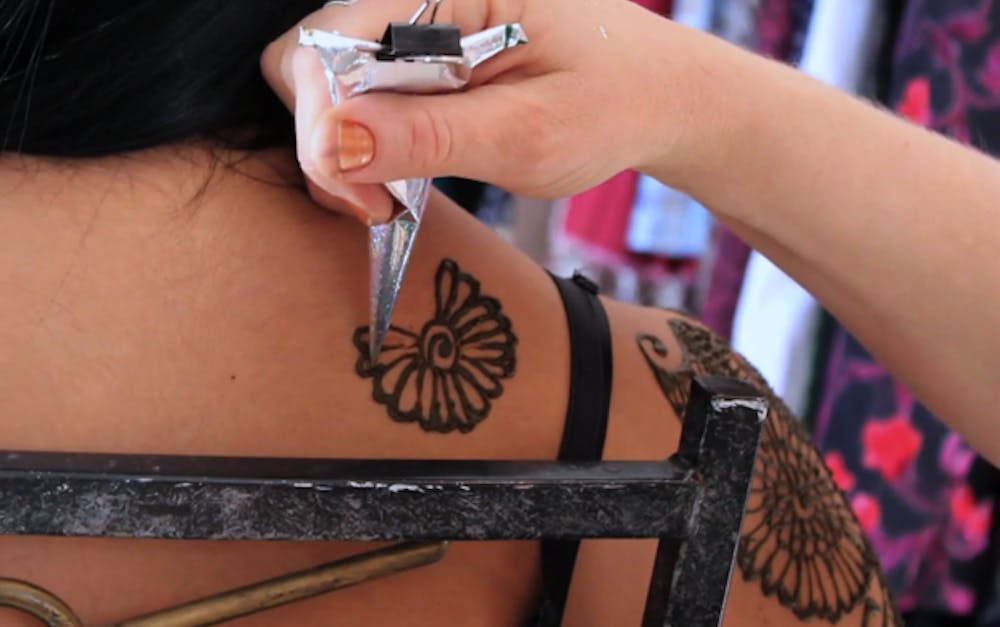Sitting at a small table in the Firehouse, a funky art collective not far from the downtown Phoenix campus, 23-year-old Joanna Lockyear squeezes brown paste out of a tube onto a girl’s skin. With sure strokes, Lockyear sketches a design from elbow to neck. The smell of lavender — an oil she adds to make the paste smell better — tickles the nose.
Lockyear is a local henna, or Mehndi, artist. She found a book about henna 11 years ago while working at Buffalo Exchange. Four years later, she began her business.
“There’s evidence I’ve read that henna dates back 9,000 years,” Lockyear says, crossing her legs. “Being that ancient of an art form, the origins are a little lost in time. It’s sort of pre-historical, which is one of the things I like about it.”
She says henna really flourished in India, where artists developed the more lacy and flowery designs. It also became popular in the Middle East, where artists create designs more geometric and symmetrical.
Even though henna has been around for hundreds of years and is made of natural ingredients, henna is not approved for skin, only hair dye. The Food and Drug Administration has an import alert issued for henna being used on skin.
Lockyear says she’s never had any problems with henna or had a client have an adverse reaction to it.
“It’s just a plant, ground up into a powder and I don’t think because the FDA hasn’t approved it means it isn’t safe for skin,” she says. “I think they might be trying to protect people from black henna, which is dangerous.”
Black henna may contain p-phenylenediamine, a hair-dye ingredient that the FDA says may trigger allergic reactions for some people.
English junior Alysia Santellan says she’s had henna body art tattooed more than 10 times and has never had any reaction to it.
“Unless it’s proven to be really, really harmful, I’ll probably continue to do it because I really enjoy having the designs on my body without them being permanent,” she says.
Santellan says she originally became interested in henna because she liked tattoos but didn’t want to get one. She didn’t like the idea of needles and her parents wouldn’t have been pleased.
“They would kill me,” she says, laughing. “They’d rather I spend 20 bucks every once and a while to have something for a month rather than have something that’s permanent.”
Lockyear says many people use henna to test out tattoos, a practice she thinks is a smart one.
“I’ve seen some really bad tattoos and this is a good way to find out what you really like,” she says.
Global studies and Spanish literature sophomore Amanda Glass says she would never get a tattoo because she’d get sick of it. With henna, people can be more whimsical.
“I have a friend who is East Indian and threw a party where we watched Bollywood movies and her mom made really delicious Indian food,” she says. “Then someone came and did henna on all of us.”
Lockyear thinks the history of henna has kept her interested in the art, but she's also impressed by newer developments of it.
“I think there’s a lot of magical traditions in henna, but there’s also more modern designs and that’s part of the continuing evolution of it,” she says. “It’s still alive and continues to take on new character.”
Reach the reporter at sheydt@asu.edu




